Introduction to the Importance of Secure Website Design and Facing Challenges
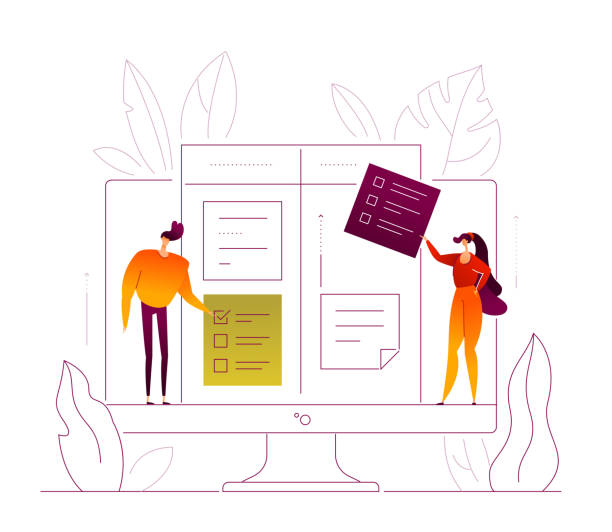
In today’s digital world, where businesses increasingly rely on an online presence, #secure website design is no longer a luxury choice but a vital necessity.
An insecure website can lead to the loss of sensitive customer data, damage to brand reputation, and even heavy financial losses.
This section explains and educates on the importance of this topic and provides an overview of existing threats.
Every organization, from small startups to large corporations, must prioritize their website security.
Cyber intrusions not only compromise data but can also erode customer trust, which is very difficult to restore.
Imagine a website that stores credit card information or personal user data being attacked; the consequences could be catastrophic.
Loss of personal customer information, privacy breaches, and legal penalties are just some of these consequences.
Cybersecurity in web design involves a set of processes, tools, and techniques aimed at protecting the website and its associated data from unauthorized access, misuse, disclosure, destruction, or alteration.
This protection must be applied across all layers of the website, from the server and database to client-side coding and content management.
The challenges ahead also include the continuous evolution of threats, the complexity of web systems, and the need for continuous awareness and training for development and management teams.
To achieve secure website design, a comprehensive and multi-layered approach must be adopted, focusing not only on technical aspects but also on human and process aspects.
This approach ensures that the website is protected against a wide range of attacks and has rapid recovery capabilities in the event of a security incident.
This is an ongoing process and requires periodic updates and reviews to counter new threats.
Do you have an online store, but your sales aren’t as expected? RasaWeb solves your problem forever by designing professional e-commerce websites!
✅ Significant increase in conversion rates and sales
✅ Unparalleled user experience for your customers
⚡ Click to receive free consultation with RasaWeb!
Identifying and Countering Common Cyber Threats in Websites
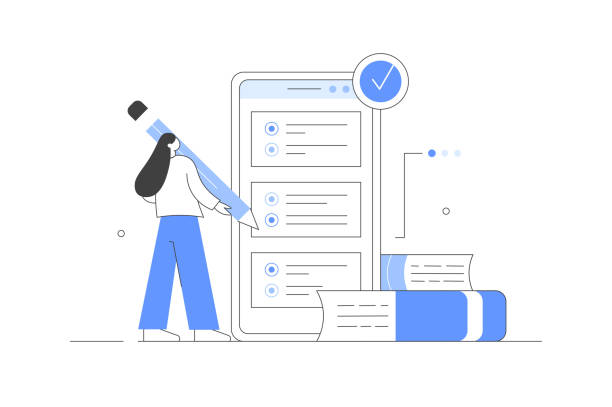
To implement secure website design, one must first be familiar with the types of cyber threats a website may encounter.
This section expertly and analytically addresses the most common attacks and provides solutions for identifying and countering them.
One of the most dangerous and well-known attacks is SQL Injection, where an attacker attempts to access or manipulate the website’s database by injecting malicious SQL code into form inputs or URLs.
The solution to counter it is to use Prepared Statements and strict input validation.
Another attack is Cross-Site Scripting (XSS), where an attacker injects malicious script code into web pages to trick user browsers and steal their information; to prevent XSS, all user inputs must be filtered and encoded.
Distributed Denial of Service (DDoS) attacks are also carried out with the aim of taking a website offline by sending a massive volume of fake traffic; the solution to counter DDoS is to use DDoS protection services and CDNs (Content Delivery Networks).
Furthermore, Brute Force attacks for password guessing, Cross-Site Request Forgery (CSRF) attacks to trick users into performing unintended actions, and Zero-Day attacks that exploit unknown vulnerabilities are other serious threats.
Countering these threats requires a comprehensive strategy that includes secure coding, regular updating of systems and software, using Web Application Firewalls (WAF), continuous monitoring of traffic and logs, and personnel training.
This multi-layered approach is essential for website safety and maintaining its integrity.
Understanding these threats helps you take effective preventive measures to protect your website against potential attacks and move a step closer to secure website design.
This knowledge is also crucial for a quick and effective response to potential security incidents.
Foundations of Security in Web Development: Choosing the Right Platform and Hosting

Choosing the right development platform and hosting environment is considered one of the fundamental pillars of secure website design.
This section guides and specializes in examining the crucial aspects of these choices.
Content Management Systems (CMS) like WordPress, Joomla, or Drupal, although easy to use, are primary targets for many attacks due to their popularity.
Therefore, using updated versions, reputable and secure plugins and themes, and correct security configuration on these platforms is crucial.
Developers who use proprietary frameworks must also adhere to secure coding principles and avoid common vulnerabilities like SQL Injection and XSS.
Utilizing security design patterns and performing regular code audits can significantly enhance code security.
Regarding hosting, choosing a reputable provider that offers strong security features is very important.
These features include hardware and software firewalls, Intrusion Detection and Prevention Systems (IDS/IPS), regular data backups, and 24/7 server monitoring.
Cloud hosting also has its own security advantages but requires precise configuration and awareness of the shared responsibility model for security.
Always use a hosting provider that has valid security certificates and follows transparent security policies.
A secure host provides a fundamental layer of site protection that prevents many infrastructure layer attacks.
Furthermore, separating development, testing, and production environments from each other and applying the principle of least privilege for users and processes are other important principles in maintaining security within the hosting environment.
Observing these points will help you lay strong foundations for your secure website design.
In summary, a table comparing the security features of various hosting types is provided below:
| Hosting Type | Security Benefits | Security Considerations |
|---|---|---|
| Shared Hosting | Easy management, inexpensive, usually has basic firewall | Vulnerability from other users, limited control over security |
| VPS Hosting (Virtual Private Server) | Better isolation, more control over security configuration | Requires technical knowledge for security management, higher responsibility |
| Dedicated Hosting | High security, full control over server and configuration | Expensive, requires very high technical knowledge, full responsibility for server security |
| Cloud Hosting | Scalability, high infrastructure security by provider, disaster recovery | Shared responsibility model, complexity in configuration, dependency on provider |
The Role of SSL/TLS Certificates and HTTPS Protocol in Web Security

HTTPS (Hypertext Transfer Protocol Secure) and SSL/TLS (Secure Sockets Layer/Transport Layer Security) certificates are the cornerstones of secure website design and encrypted communications on the web.
This section educates and explains their importance and operation.
HTTPS is essentially the secure version of the HTTP protocol that uses SSL/TLS to encrypt traffic between the user’s browser and the website server.
This encryption ensures that exchanged data, such as login information, credit card details, or contact forms, remain safe from eavesdropping, tampering, or theft by attackers.
Without HTTPS, your transmitted information on the internet is visible as plain text and can be easily intercepted by anyone with network access.
An SSL/TLS certificate is a small digital file that authenticates your website’s identity and enables encrypted communication.
This certificate is issued by a Certificate Authority (CA) and includes the website’s public key, which is used to initiate the encryption process.
There are different types of SSL certificates, including:
- DV (Domain Validation): The fastest and cheapest type, only verifies domain ownership.
- OV (Organization Validation): In addition to the domain, also verifies the organization’s identity and is suitable for reputable businesses.
- EV (Extended Validation): Offers the highest level of trust and displays the organization’s name in the browser’s green address bar.
Correct installation and configuration of the SSL/TLS certificate and ensuring that all website content (images, scripts, styles) is loaded via HTTPS (preventing “Mixed Content” errors) are essential for a secure website.
In addition to security, HTTPS also helps improve your website’s SEO ranking, as Google prefers websites with HTTPS.
Activating HTTPS and its proper implementation is a fundamental step towards increasing user trust and providing a secure and reliable user experience, which is an integral part of secure website design.
Is your current e-commerce website not generating the sales you expect?
RasaWeb specializes in professional e-commerce website design!
✅ Attractive and user-friendly site aimed at increasing sales
✅ High speed and security for an ideal shopping experience⚡ Get a free consultation for online store design with RasaWeb!
Regular Updates and Maintenance for Website Security
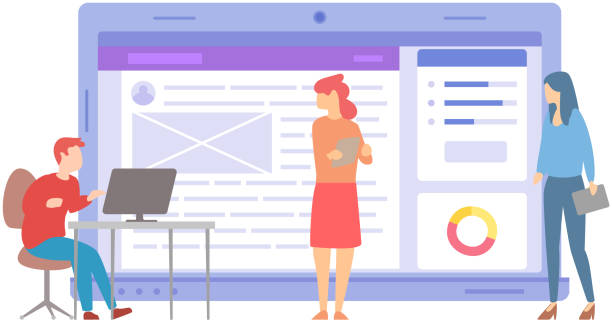
One of the most important yet often overlooked aspects of secure website design is regular maintenance and updates.
This section provides guidance and news on the importance of this process and offers practical recommendations.
Software used on a website, including the server operating system, web server (such as Apache or Nginx), database (such as MySQL or PostgreSQL), programming language (such as PHP or Python), and especially the Content Management System (CMS) and its plugins/extensions, are constantly subject to new security bugs being discovered.
Developers of these software quickly release security patches to address these vulnerabilities.
Failure to apply these updates means leaving entry doors open for attackers.
In addition to software, themes and plugins used in CMSs must also be regularly checked and updated.
Many intrusions occur through vulnerabilities present in old and unreliable plugins.
Therefore, only use reputable sources for downloading and installing plugins and remove unnecessary plugins.
Regular and automatic backups of the website and database are also crucial.
In the event of a successful attack or system failure, having an up-to-date backup can drastically reduce recovery time and prevent permanent data loss.
These backups must be stored in a secure location separate from the main server.
Continuous monitoring of server and website logs to identify suspicious activities is another important aspect of maintenance.
Monitoring tools can send alerts if attack patterns, unauthorized login attempts, or sudden traffic spikes are detected.
This proactive and reactive approach to maintenance is an inseparable part of comprehensive website security and contributes to its long-term stability and durability.
Secure website design without an active maintenance plan is like building a house without a roof; although it has a strong foundation, it will be vulnerable to external factors.
Therefore, prioritize a meticulous and continuous maintenance and update plan.
Penetration Testing and Vulnerability Assessment: A Critical Proactive Step

Penetration Testing and Vulnerability Assessment are two vital and proactive steps towards ensuring secure website design.
This section analytically and expertly discusses the importance and methods of performing these tests.
Vulnerability assessment means identifying and cataloging security weaknesses in the website’s system, network, and software.
This can be done using automated vulnerability scanner tools that quickly check for thousands of known weaknesses.
These tools can identify issues such as misconfigurations, outdated software with known vulnerabilities, or common coding weaknesses.
In contrast, penetration testing goes beyond mere vulnerability identification.
In this method, a security expert (also known as an “ethical hacker”) attempts to infiltrate the system and exploit discovered vulnerabilities using methods and tools similar to real attackers.
The goal of penetration testing is not only to find weaknesses but also to evaluate their real impact and determine the system’s susceptibility to targeted attacks.
This test can be performed as Black Box (without knowledge of the internal system structure), White Box (with full access to code and structure), or Gray Box (with limited access).
The results of these tests help the organization gain a realistic picture of its website’s security posture and prioritize vulnerabilities based on their severity and risk.
After identification and prioritization, corrective actions must be taken swiftly to address the weaknesses.
This process should be repeated periodically and after any major changes to the website (such as adding new functionalities or infrastructure changes) to continuously maintain website security.
This proactive approach, instead of reacting to attacks after they occur, allows organizations to remediate weaknesses before cybercriminals exploit them, ultimately leading to a secure and stable website design.
Educating Users and Development Team on Cybersecurity: The Human Link in Security
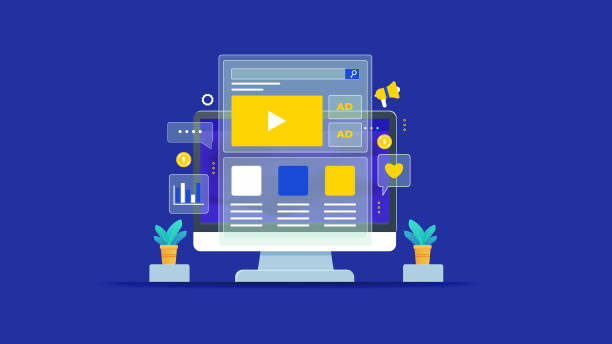
In any secure website design strategy, the human factor plays a very important role.
This section educates and guides on the importance of educating users and the development team about cybersecurity.
Many successful cyberattacks occur not due to technical flaws, but due to human errors, falling victim to phishing attacks, or neglecting simple security protocols.
Therefore, continuous awareness and training for all stakeholders are crucial.
For website users, training should include tips on choosing strong and unique passwords, enabling two-factor authentication (2FA), identifying phishing emails and fake websites, and being aware of the dangers of clicking on unknown links.
Encouraging users to use password managers and warning about sharing personal information can also help increase their security.
This content can be provided in an engaging manner through videos or infographics.
For the development team, training should be deeper and more specialized.
These trainings should include Secure Coding Principles, familiarity with common OWASP Top 10 vulnerabilities, proper use of security frameworks, and the importance of input and output validation.
Furthermore, the development team should be familiar with security processes such as Code Review, penetration testing, and Patch Management.
Beyond technical knowledge, the security culture within the organization must also be strengthened.
This means that security must be considered from the very beginning of the software development lifecycle (Security by Design and Secure SDLC) and not just in the final stages.
Conducting workshops, seminars, and simulated phishing tests can help enhance security awareness and skills within the organization.
Investing in human factor training is as important as investing in technical tools and ultimately leads to a comprehensive secure website design.
Neglecting this dimension can render any other effort to increase website security ineffective.
In the table below, key security training points for two main groups are listed:
| Target Group | Key Training Topics | Importance in Secure Website Design |
|---|---|---|
| End Users | Strong password, 2FA, phishing, identifying suspicious URLs | Reducing user-side attack risks, protecting personal information |
| Development Team | Secure coding, OWASP Top 10, code review, secure SDLC principles | Preventing vulnerabilities at the code level, enhancing infrastructure security |
Dealing with Attacks and Data Recovery After Intrusion: Planning for the Worst-Case Scenario

Even with the best secure website design practices, the likelihood of an intrusion is not zero.
This section expertly and analytically addresses planning for attack countermeasures and the data recovery process after an intrusion.
Having a comprehensive and predefined Incident Response Plan is essential for minimizing damage and rapidly restoring website operations.
This plan should include specific steps:
- Identification: Detecting and confirming the intrusion or security incident.
This stage includes monitoring tools and security alerts. - Containment: Preventing the attack from spreading to other parts of the system or network.
This may involve isolating infected servers or temporarily cutting off website access. - Eradication: Removing the cause of the intrusion, malware, and any malicious changes made by the attacker.
This stage often involves restoring from clean backups. - Recovery: Restoring systems and services to normal operational status.
This includes a thorough security review and ensuring no remaining vulnerabilities. - Lessons Learned: Analyzing the incident, identifying the root cause, and implementing necessary changes in security policies and procedures to prevent recurrence.
Additionally, having a Disaster Recovery Plan is of paramount importance.
This plan focuses on the complete recovery of systems and data after a major disaster (such as server failure, natural disasters, or widespread cyberattacks).
Regular and tested backups of data in separate locations are one of the main pillars of this plan.
The incident response team must be trained and regularly simulate and practice various intrusion scenarios.
Transparent communication with users and stakeholders during and after a security incident is also crucial.
This complete readiness for worst-case scenarios not only strengthens web security but also significantly aids in rapid recovery and maintaining user trust after an incident.
Ignoring this aspect of secure website design can have irreparable consequences for your business.
Do you have an online store, but your sales aren’t as expected? RasaWeb solves your problem forever by designing professional e-commerce websites!
✅ Significant increase in conversion rates and sales
✅ Unparalleled user experience for your customers
⚡ Click to receive free consultation with RasaWeb!
The Future of Secure Website Design and Emerging Challenges

The future of secure website design faces new challenges and opportunities that are constantly changing and evolving.
This section explores future trends and emerging threats in web security as thought-provoking and engaging content.
Artificial intelligence (AI) and machine learning (ML), which can be used as powerful tools to enhance security (such as detecting anomalies and advanced attacks), can equally be employed by attackers to develop more complex and automated attacks (such as intelligent phishing attacks or automated vulnerability identification).
This duality of AI’s role in security will be one of the biggest challenges of the future.
The emergence of the Internet of Things (IoT) and the proliferation of internet-connected devices have significantly expanded the attack surface.
Websites and platforms that interact with IoT devices must ensure the security of these devices and the data sent/received by them.
This involves challenges such as security updates for numerous and diverse devices, and protecting sensitive data collected by them.
Furthermore, threats related to quantum computing are also on the near horizon.
Quantum computers in the future will be able to rapidly break current encryptions, which makes the development of post-quantum cryptography algorithms even more essential.
Websites must be prepared to migrate to these new algorithms in the future.
In terms of attacks, we are seeing an increase in Supply Chain attacks, where attackers target third-party components (such as JavaScript libraries, plugins, or cloud services) used by the website, instead of directly attacking the main website.
This highlights the need for a thorough review of the security of all external dependencies.
Finally, data privacy and regulations such as GDPR and CCPA are increasingly impacting web security and how user data is managed.
Websites must be designed to incorporate privacy from the outset (Privacy by Design) and comply with relevant regulations.
These challenges require forward-thinking and a flexible approach to secure website design to withstand the evolving threat landscape.
Conclusion and Final Recommendations for Sustainable Secure Website Design
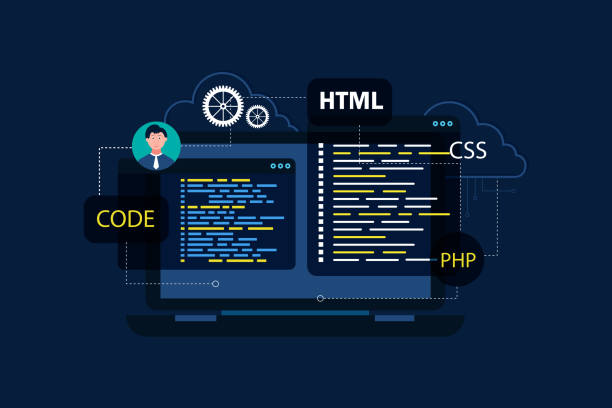
Throughout this article, we discussed in detail various aspects of secure website design and clarified its importance in today’s digital world.
This section, in an explanatory and guiding manner, summarizes key points and provides final recommendations for building and maintaining a secure and sustainable website.
Web security is not a static process but a continuous and dynamic journey that requires constant attention and investment.
To achieve sustainable secure website design, a comprehensive and multi-layered approach must be adopted, which includes technical, procedural, and human dimensions:
- Secure Technology: From the outset, choosing secure platforms, reputable hosting, and using encryption protocols like HTTPS is essential.
Coding must adhere to security principles, and reputable frameworks should be used.
Implementing Web Application Firewalls (WAF) and Intrusion Detection Systems (IDS) can also provide additional layers of defense. - Continuous Processes: Regular updates of software, plugins, and the server operating system are crucial.
Periodically performing penetration tests and vulnerability assessments helps identify and fix weaknesses before attackers can exploit them.
Regular and tested data backups and a comprehensive incident response plan are essential for rapid recovery after any security incident. - Aware Human Factor: Continuous training for the development team on best secure coding practices and educating users about cyber risks are key pillars for preventing social engineering attacks and human errors.
Security culture must be embedded throughout the organization.
Finally, remember that any investment in website security support is not just an expense, but a wise investment to protect your business’s reputation, data, and future.
By following these recommendations, you can ensure that your website provides a secure and reliable online environment for your users and business, and you will experience a truly sustainable secure website design.
Security is not a destination, but a journey.
Frequently Asked Questions
| No. | Question | Answer |
|---|---|---|
| 1 | What does secure website design mean? | Secure website design refers to a set of measures and methods used to protect a website against cyberattacks, unauthorized access, data leaks, and other security threats. Its goal is to maintain the confidentiality, integrity, and availability of information. |
| 2 | Why is website security important? | Website security is crucial for maintaining user trust, protecting sensitive information (such as personal and financial data), preventing financial losses, preserving brand reputation, and complying with legal regulations (such as GDPR). A security breach can lead to customer loss and heavy penalties. |
| 3 | What are some of the most common security attacks against websites? | Common attacks include SQL Injection, XSS (Cross-Site Scripting), CSRF (Cross-Site Request Forgery), Brute Force, DDoS attacks, Broken Authentication, and Missing Function Level Access Control. |
| 4 | What is the role of SSL/TLS certificates in website security? | An SSL/TLS certificate (which results in an HTTPS address) is used to encrypt data exchanged between the user and the website server. This prevents eavesdropping or tampering with sensitive information such as passwords and credit card details during transmission and verifies the website’s authenticity. |
| 5 | How can SQL Injection attacks be prevented? | To prevent SQL Injection, Prepared Statements or ORM (Object-Relational Mapping) with validated parameters should be used. Additionally, strict user input filtering and validation (Input Validation) and applying the principle of least privilege in the database are essential. |
| 6 | What is HTTP Strict Transport Security (HSTS) protocol and how does it help security? | HSTS is a web security policy that tells browsers to load the website only over an HTTPS connection, even if the user enters the address with HTTP. This prevents downgrade attacks and cookie theft on public Wi-Fi networks. |
| 7 | What is the importance of regular software and plugin updates in website security? | Regularly updating the Content Management System (CMS), plugins, themes, and other software components of the site is crucial for fixing discovered security vulnerabilities. Developers continuously release security patches, and failing to update can leave the site vulnerable to known attacks. |
| 8 | What measures can be taken to increase the security of the website administration section (admin panel)? | Changing the default admin panel path, using strong passwords and two-factor authentication (2FA), restricting access to specific IPs, using CAPTCHA on login pages, monitoring logs, and continuous CMS updates are among these measures. |
| 9 | Why is user input filtering and validation (Input Validation) important? | Input filtering and validation help prevent the injection of malicious code or unauthorized data through forms, URLs, or other user input sections. This prevents attacks like XSS and SQL Injection that exploit invalid inputs. |
| 10 | Name a few common tools or services for checking and enhancing website security. | Tools such as Web Application Firewalls (WAF), vulnerability scanners (e.g., Acunetix, Nessus), Intrusion Detection and Prevention Systems (IDS/IPS), CDN services with security features (e.g., Cloudflare), and periodic Penetration Testing can enhance website security. |
And other advertising services of RasaWeb Advertising Agency in the field of advertising
Analyzing the performance of ads placed on industrial websites and their correlation with sales
Methods for optimizing home appliance ads for search engines on specialized websites
Examining the pros and cons of placing ads on industrial websites compared to traditional methods
Techniques to increase click-through rates on home appliance manufacturers’ ads
Differences in behavior between wholesale buyers and end consumers when encountering industrial ads
And over a hundred other services in online advertising, advertising consultation, and organizational solutions
Online Advertising | Advertising Strategy | Advertorial
🚀 To leapfrog your business in the digital world, partner with RasaWeb Afarin; where expertise, innovation, and smart strategies pave your path to success.
From multilingual website design and SEO to targeted advertising campaigns, RasaWeb Afarin takes a comprehensive approach to keep your brand at its peak. Contact us today and shape the digital future of your business.
📍 Tehran, Mirdamad Street, next to Bank Markazi, Kazeroun Jonoubi Alley, Ramin Alley No. 6

